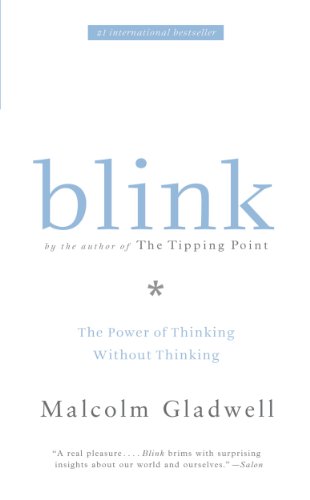

This article is an excerpt from the Shortform summary of "Blink" by Malcolm Gladwell. Shortform has the world's best summaries of books you should be reading.
Like this article? Sign up for a free trial here .
Could you be harboring implicit biases about people based on their race? It’s disheartening to learn that implicit racism is far more prevalent than we like to think.
And as much as you believe in racial equality and treating everyone with compassion and respect, you may be judging others based on racial stereotypes without even being aware of it. Learn to become aware of and address signs of implicit racism.
Implicit Racism: The Dangers of Mismatched Conscious and Unconscious Attitudes
Implicit racism is the unconscious prejudice against someone based on his or her race.
Many psychologists use the Implicit Association Test (IAT) as a tool in their attempts to understand how unconscious associations affect our beliefs and behavior. (You can find the IAT online at www.implicit.harvard.edu if you’re interested in learning more about your own unconscious associations.) Among other unconscious attitudes, this test can gauge test-takers’ implicit racism.
IAT test-takers need to put words into categories as quickly as they can. A computer program times the speed of each reaction. The longer you take to move a word to a category, the more your conscious brain is fighting your unconscious brain. This could indicate that your conscious brain is contradicting your implicit biases.
Racial Stereotypes and Implicit Racism
Regardless of their stated beliefs, more than 80% of IAT-takers have “pro-white associations.” In other words, it takes slightly longer for most people to put words like “glorious” and “wonderful” in the “African American” category than to put words like “hurt” and “evil” in the same category. This is implicit racism. Again, the majority of us harbor unconscious believes of implicit racism based on racial stereotypes.
This doesn’t just apply to test-takers who aren’t African American—50% of more than 50,000 African Americans tested have pro-white associations.
In the U.S., where we’re still bombarded by messages implicitly linking “white” with “good,” it’s hard to develop unconscious attitudes about race that match our conscious ones. We’re not racists. But we still make unconscious assumptions based on racial stereotypes, leading to implicit racism.
The implications of this mismatch are unsettling. When we act automatically, we depend on our implicit attitudes. Studies show that if you have strong pro-white associations, you’ll act differently around someone who’s Black. You probably won’t even be aware that you’re behaving differently. The cues will be subtle:
- You might not lean toward or directly face him or her.
- You might stand further away.
- You might not be as expressive as you would be around a white person.
- You might smile and laugh less.
- You might make less eye contact.
- You might stumble over your words more.
Unconscious attitudes and implicit racism alter our experiences. These experiences then affect our future unconscious attitudes, resulting in a vicious cycle. We tend to unknowingly reinforce our implicit racism when we do nothing about it.
For example, say you’re a Black male interviewing for a job opening. Your interviewer is a white male with pro-white associations.
Your unconscious mind picks up on the interviewer’s subtle distance and lack of eye contact. Consequently, you lose confidence. Your interviewer’s unconscious mind picks up on your lack of confidence. He gets the gut feeling that you’re not competent or serious enough about the job. This reinforces the interviewer’s unconscious, pro-white associations. This is the danger of implicit racism. It’s sneaky.
Our unconscious racial and gender attitudes matter, regardless of what our stated, conscious attitudes are.
Implicit Racism and the Power of Priming
The statistics showing how much our unconscious attitudes like implicit racism influence our actions are grim. We can’t choose our unconscious attitudes. But does this mean we can’t change them? Can we eradicate our implicit racism?
The technique of “priming” gives us hope. Priming demonstrates that our unconscious minds are extremely suggestible. This makes the unconscious vulnerable to negative suggestions, but it also makes it available for positive suggestions. Priming sheds light on one way to influence otherwise inaccessible unconscious processes, like those built on racial stereotypes.
Priming happens when your associations with one thing affect your reaction to something else. This makes more sense in context, so let’s look at some priming experiments that demonstrate how easily swayed the unconscious mind is.
(Shortform note: The concept of priming is controversial since many of the studies have failed to replicate the original findings, suggesting the studies were either cherry-picked to yield the best results or, at worst, fabricated. At best, priming is a more complex phenomenon than originally thought.)
Experiment: How we’re affected by unconscious racial stereotypes
Psychologists asked Black college students to take a test with 20 questions from the GRE. They divided the students into two groups:
Group A had to identify his or her race in a pre-test question.
Group B did not have to identify his or her race.
Results:
Students who had to identify their race got half as many questions right as the group that didn’t answer a pre-test question about race. Being reminded of their implicit racism regarding their own identities slashed their chance of success by half.
This is a big deal. Scores on standardized tests like the GRE can make the difference between attending your first-choice school and not going to graduate school at all.
One reason white students may do better on these kinds of tests is that they are primed with the idea of “smart.” Black students may be subconsciously reminded of negative racial stereotypes when they have to identify their race. They also may feel pressure to represent their race well on the test, increasing testing anxiety. Many of these test-takers probably weren’t even aware why they were so nervous–implicit racism doesn’t leave obvious signs.
These experiments show us that priming can have devastating effects on our unconscious attitudes and, consequently, our lives. But they also show us a path forward. If we can negatively influence our hidden attitudes, we can also positively influence them.
What Can You Do to Change Your Implicit Racism?
Unconscious discrimination like implicit racism is harder to see, and therefore harder to rectify, than blatant discrimination. How do you fix something that happens below the level of conscious thought?
1. Use priming to your advantage.
For example, looking at pictures of Martin Luther King, Nelson Mandela, or Colin Powell before taking the IAT changed people’s reaction times. They strengthened their association between “African American” and “good.” This weakens your implicit racism by countering negative racial stereotypes.
2. Change your experiences
Your unconscious attitudes, including implicit racism, are based on your environment and accumulation of prior experiences. To change your unconscious attitudes, you need to change your environment and experiences.
When you become aware of an implicit association that’s discriminatory—perhaps you take the race section of the IAT and you’re one of the 80% who have a white preference—alter the association by spending time with people who counter your implicit racism. Read books, watch movies, and become familiar and comfortable with cultures that your unconscious mind discriminates against. You’re training your unconscious mind to change its opinion. In the process, you’re fighting your implicit racism.
———End of Preview———

Like what you just read? Read the rest of the world's best summary of "Blink" at Shortform . Learn the book's critical concepts in 20 minutes or less .
Here's what you'll find in our full Blink summary :
- How you can tell if a marriage will fail, within 3 minutes
- Why your first impressions are usually surprisingly accurate
- The dark side to making first impressions, and how to avoid the,






